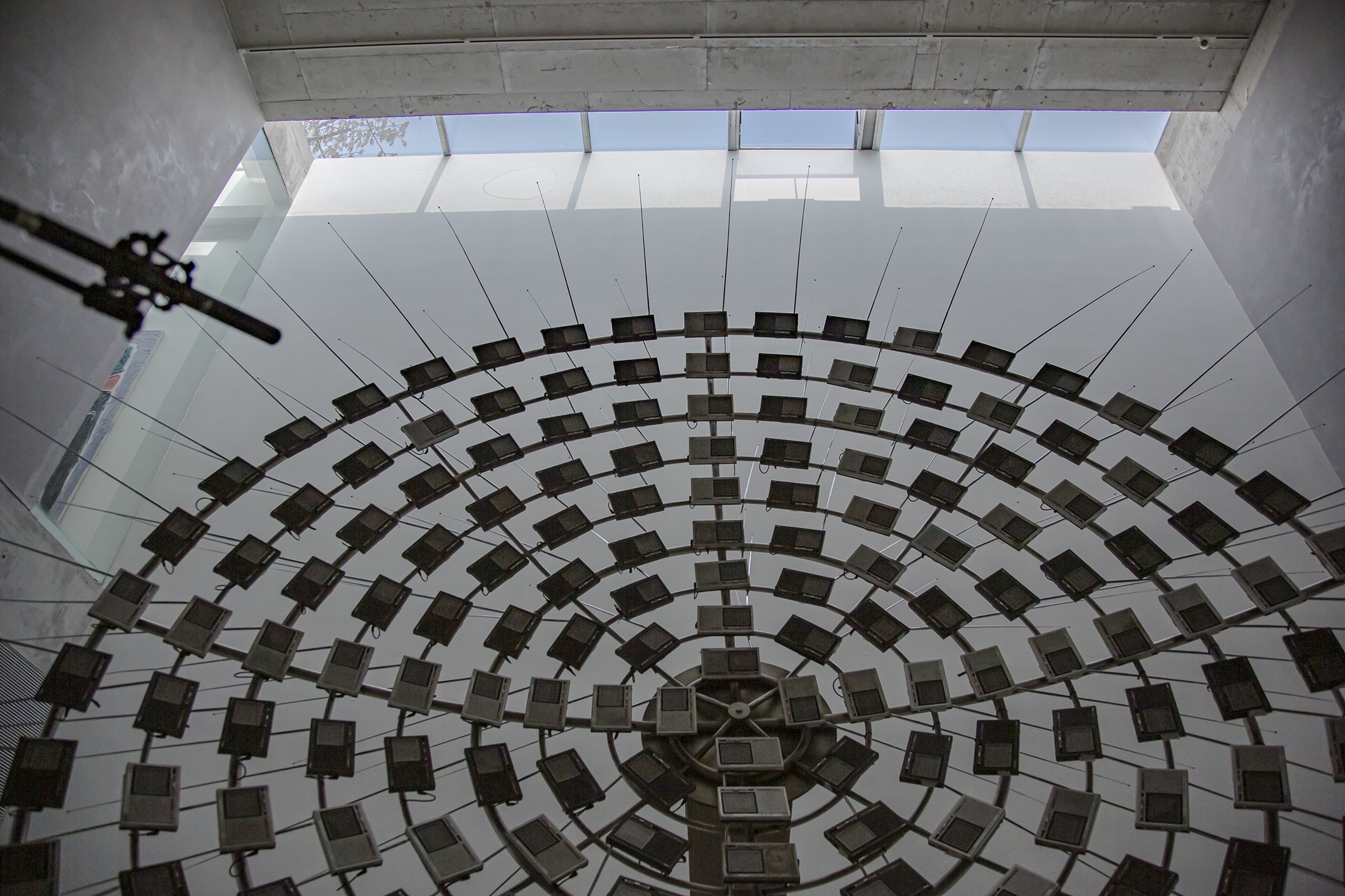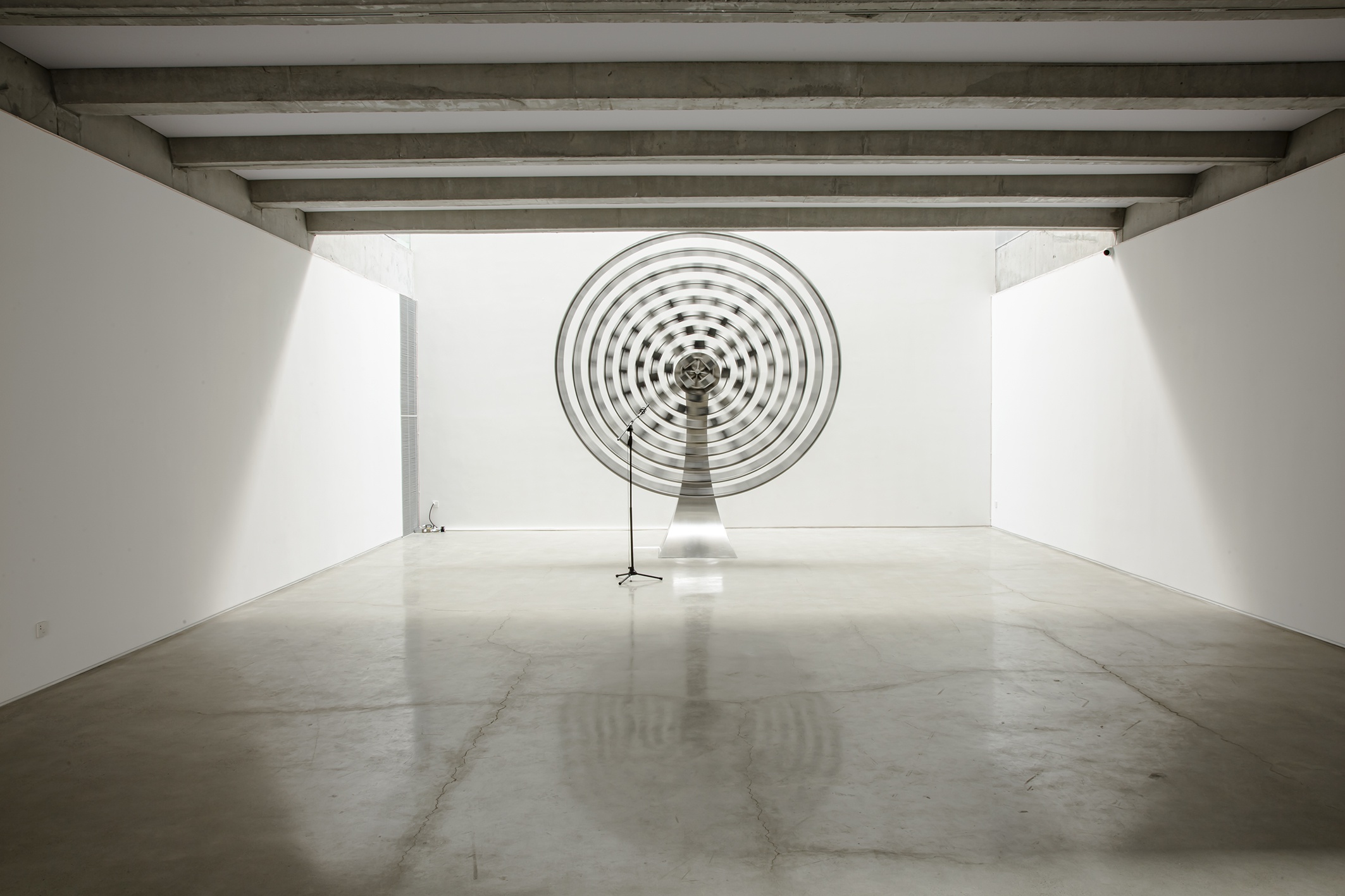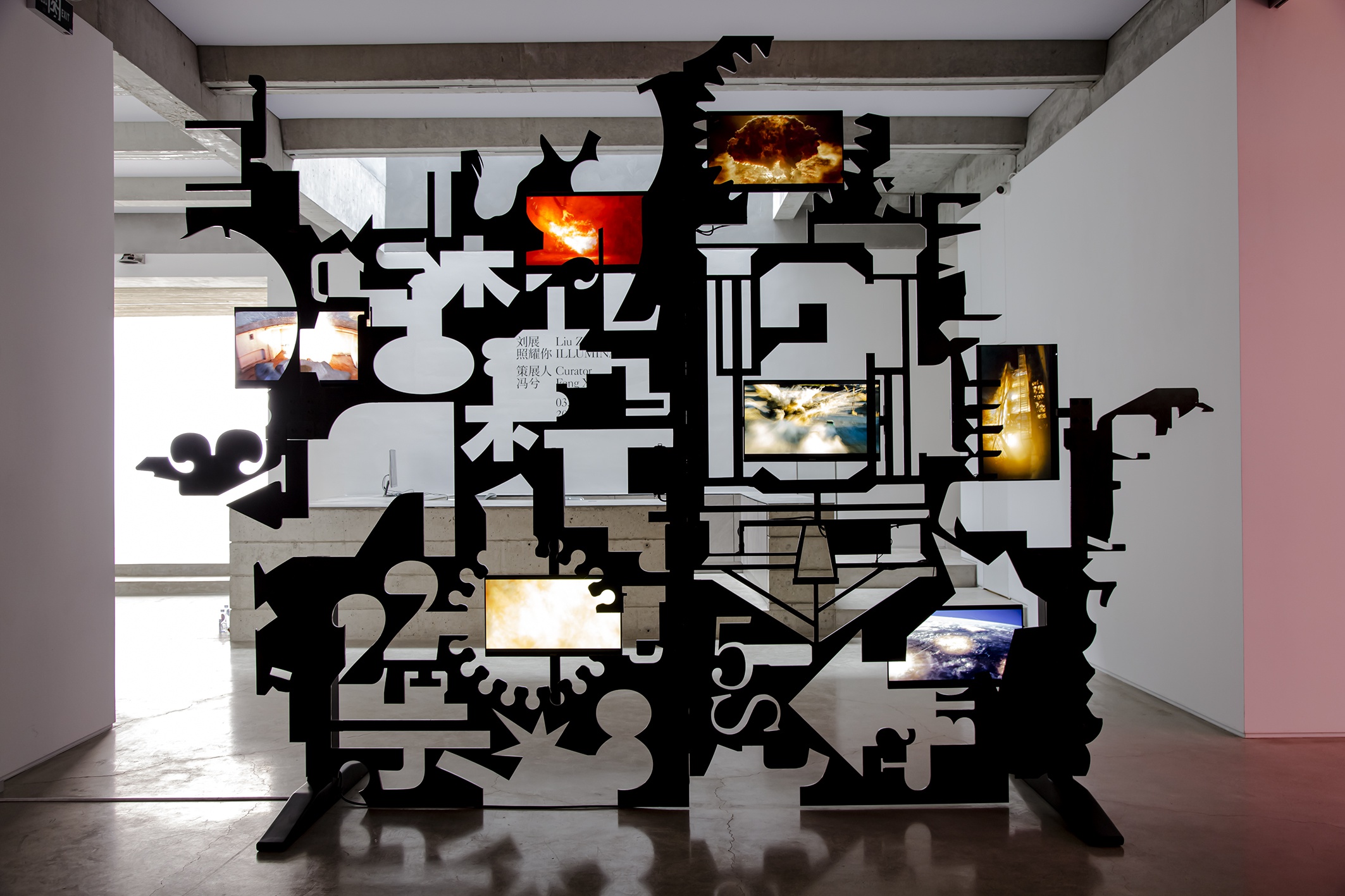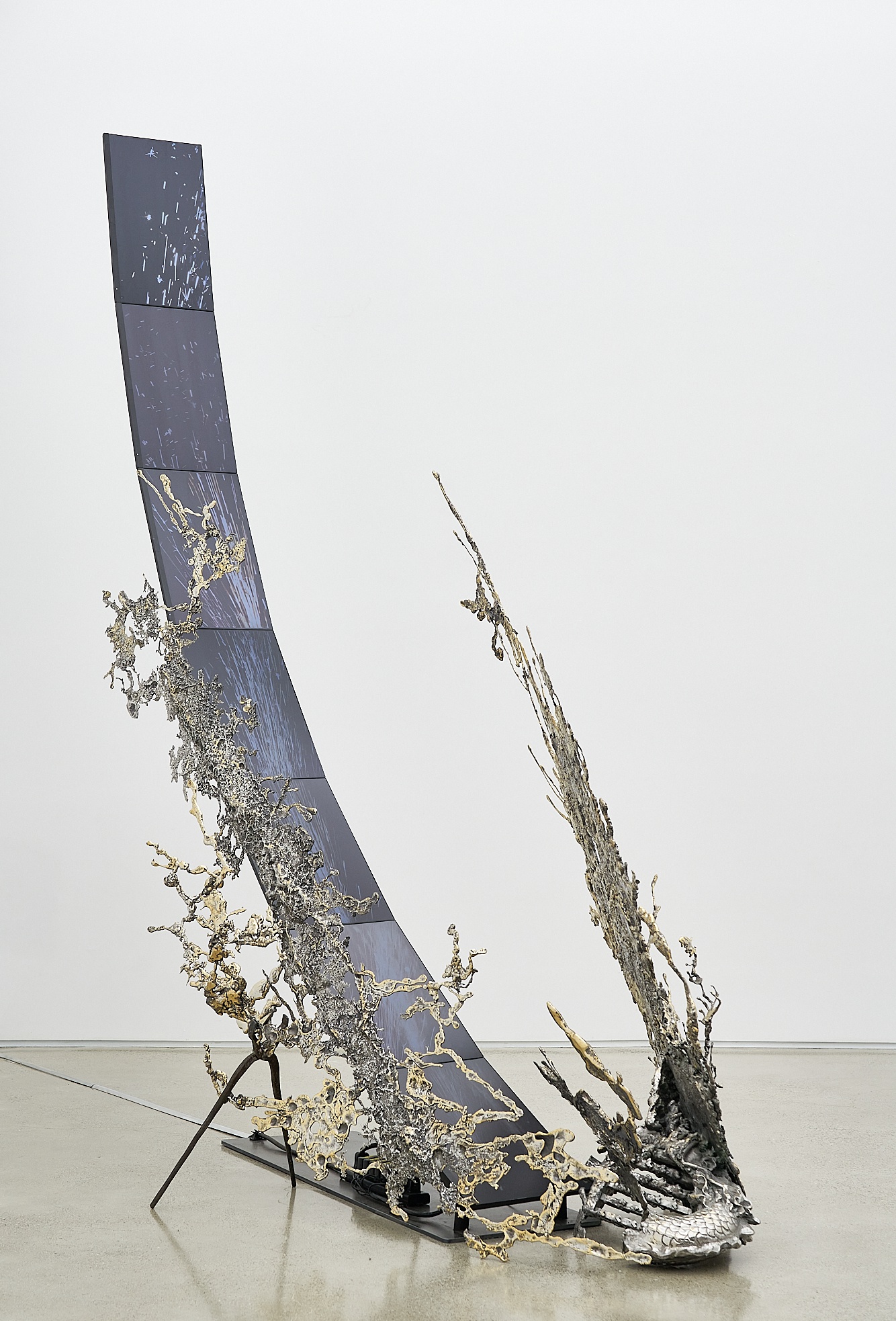Light and fire bring brightness and warmth to the world, guiding our way and illuminating the whole of creations and ourselves. Light converges to become eyes through which we discover the world; in the process, fire is the burning body and bones. All of us have incarnated as fire and light of youth—on the journey of discovering ourselves— having become the subjects and objects, to illuminate and to be illuminated.
As an artist, Liu Zhan has been silent for a relatively long time. In the past ten years, Liu Zhan held two solo exhibitions: “The Mysteries of Animal Reproduction” held at Magician Space in 2017 and “Balcony” exhibited at DRC No. 12 in 2018. Through the two exhibitions with distinctive ways of expression, Liu Zhan had shaken off the belief in methodology as the sole guidance. Meanwhile, other than focusing on the critical perspective of consumerism, the artist directed his attention to the interaction and alienation between individuals and society, which enabled his creative work to be remarkably diversified. As Illuminate is the first major solo exhibition of Liu Zhan as an independent artist, we may ask, is it a presentation of his sculptural works? Or is it a way of self-discovery and expression as a result of the artist’s ten years of “gaming”? Eventually, you will find answers to the questions at the exhibition.
Back in 2002, UNMASK, a trio of graduates from the Department of Sculpture at the Central Academy of Fine Arts, was formed. Like a foresighted public-relations company, UNMASK presented their works in the context of consumerism, where product consumption functioned as the language per se that resisted and criticized consumerism. Adopting an integrative method that brought together designing, manufacturing, marketing, and other commercial attributes, UNMASK directly accomplished their practical goal by connecting the points where art and commerce collided in a mode of business through manufacturing and consuming. Designing an idea on consumption itself appeared significantly different from presenting an image of the ideology that was opposed to consumerism at that time. UNMASK foregrounded thinking and creating as a collective, concealing the individuals’ personal identities. In doing so, they attempted to develop UNMASK as a brand that would be equally recognized by the art scene and the market. Ultimately, the idea was to criticize consumption in the form of consumption. Regrettably, UNMASK, as an art trio, was only recognized in the field of art and they failed to raise the value and influence of UNMASK itself as a brand. In their final exhibition “Shopping”, the group further productized their works in the form of a shop window, satisfying their needs of a complete process of commercialization. The cost of criticizing consumerism by criticizing consumption itself was escalated amid the complaint about the incapability to distinguish artworks from consumer products; in the process, the criticism of consumerism was overwhelmed by consumption itself. As a group member of UNMASK, Liu Zhan realized the potential risk of being consumed by the market while criticizing consumerism. He then chose to leave UNMASK.
The most challenging step towards becoming an independent artist is how to deal with the way of thinking and creative methods that had been deeply established. It took Liu Zhan six years to get over the past experience that had made him a mature artist. The process, as he recalled, was like peeling off his skin layer by layer, which inflicted intense pain. His chief enemy was his reliance on the sculptural language and the smooth-running creation as a result of prior experience. During that time, Liu Zhan gave up sculpture and his habitual approaches. In 2015, Liu Zhan created “The Inner Egg”. He invited Jin Bo, a stone sculptor who had been suffering kidney stone symptoms, to transform a stone lion into a kidney stone through stone carving techniques such as grinding. When performing the grinding for a prolonged time in the work environment, Jin Bo was constantly exposed to dust particles that splashed and scattered, which turned out to be part of the underlying cause of his kidney stone symptoms. For that reason, Liu Zhan became more inclined to face up to reality, and to rethink his way and method of artistic creation. As a result, sculpture was no longer the core of his methodology; it only served as a means of producing output based on his artistic concepts, which allowed Liu Zhan to regain his freedom of taking humanistic care into account on the journey of portraying pain and hardship.


Taking good advantage of the gallery space, the exhibition is composed of three distinctive scenarios, including “Song of the White Clouds”, “Illuminate”, and “The Rays of Sunlight”. “Song of the White Clouds” is an updated version of “Balcony” that was exhibited at DRC No.12 in 2018. As one of the most important projects that Liu Zhan has presented in recent years, “Balcony”—now renamed as “Song of the White Clouds”— is set in a new context to be displayed in the gallery. As being taken out of the specific political context, the work resembles a song of the white clouds when the audience looks up at the sunlight shining through the sunroof to see the white clouds passing over the sun and hear the sound of the radio. When the sound comes into one’s empty heart, it must be the white clouds bursting into a song. It is not a story of the white clouds. At the end of the sound wave, being guided by the white clouds, when traveling miles away along the road of wisdom, there is a world of singing where each of us is a listener. The action of turning on and off shortwave radio frequencies has been almost forgotten in today’s world. However, information is a tool for discovering the world, acquiring knowledge, and connecting ideas. The action of tuning up and down the frequencies and picking up signals, in a way, is the process of generating signals to listen to a song emitting from the white clouds. Like the light of a flame, the sound illuminates the past, the present, and the hearts of the young audience in front of the shortwave radio.

“Illuminate” is a description of class, labor, and the body. Liu Zhan repeatedly and constantly polished the surface of the collected scrap metal to bring about a mirror-like effect to reflect the world. The only light source throughout the grinding process came from the sparks that splashed about, through which labor and dedication were reflected in the metal mirror. Mechanical labor, deafening noise, the smell of sweat and rust, and the brilliant sparks brought together such a poetic scene. In the process of recording, the sparks seemed to be reborn and have been transformed into rays of light that can illuminate the world. The body is the capital for revolution and also the consumables for capital. The pyres built as ramparts seem to be ignited by the roaring rotation of the machine, making their choice in the middle of tiredness and determinedness but effortlessly indicating a sense of heartache. In the second space, the labor of the worker’s body turns into the firelight, illuminating the artworks on display and the audience in the gallery.

“The Rays of Sunlight” presents a variety of forms. Using aluminum alloys to build a large product display stand, Liu Zhan placed a selection of his artworks created in the past ten years, allowing for the quality of a chaotic street stall. Having intended to display parallel rows of artworks characterizing cultural productions of various kinds, the artist aims to encourage viewers’ sense of impulse buying. Liu Zhan intends to remain critical of consumerism by turning abandoned items other than manufactured goods into abstract items using new materials in a new artistic language. The characteristics of “products” showcased in the presence of the selected works, in all likelihood, indicate a state of confusion that combines thoughts and material desires. As the neon lights hanging over the display stand vividly illuminate the products — thanks to the corresponding lights under the glass— the artworks on display seem to be suspended in mid-air. Like brilliant rays of sunlight, the neon lights appear to lead the viewers to a world of desires.

Wandering in the three areas, you and I become the subjects and objects to illuminate and to be illuminated. When the sound of singing, sparks, and rays of light are being transformed into power to control space and the body, time measurement turns futile and pointless. Who, at the end of the day, can become what they want to be? Indeed, if you are not able to become what you want to be, it would rather be illuminating you.

